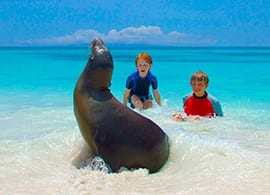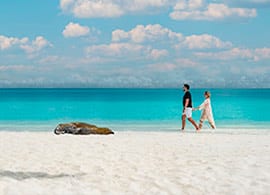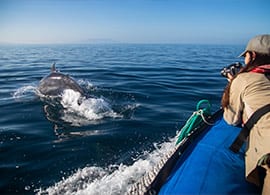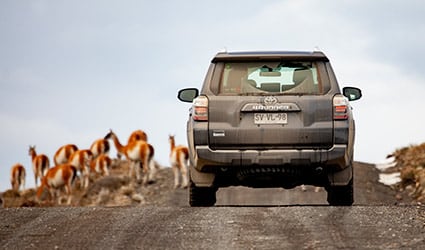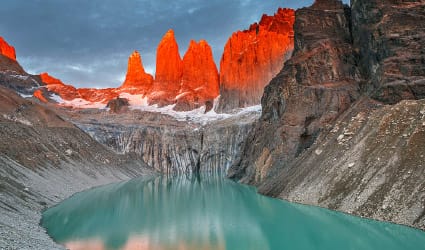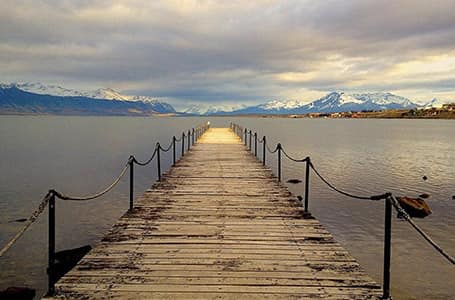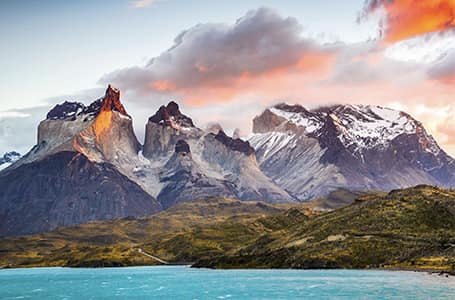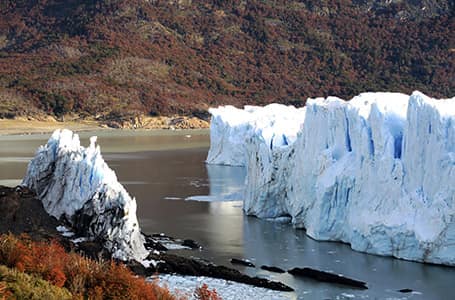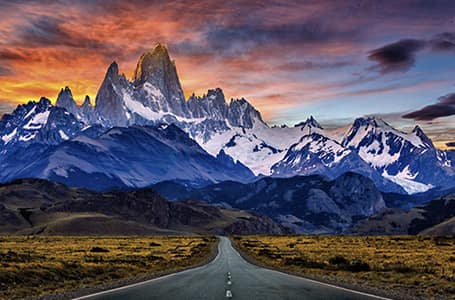- Home >
- Travel Guide >
- Patagonia Travel Guide >
- About Patagonia
About Patagonia, South America
Located at the southern end of South America, Patagonia is a territory shared by the countries of Chile and Argentina. The region of Patagonia encompasses the southern section of the Andes mountain range to the southwest towards the Pacific ocean (Chilean side) and from the east of the Andes to the valleys it follows south through Rio Colorado towards the Atlantic Ocean (Argentinean side). It covers an area of around 300,000 sq. mi. (777,000 sq. km.), including some islands of the Argentinean Antartica and South Atlantic, as well as the popular territory of Tierra del Fuego, found on the southernmost tip of the continent. This region is very sparsely populated having approximately 1.5 people per sq. km.
The striking scenery of Patagonia is the result of major glaciological and geological transformations that took place in the region millions of years ago, creating mountains and countless valleys, glaciers, lakes and rivers. Patagonia is one of the most uninhabited areas of our planet and home to an incredible variety of wildlife and plant life, many of which is endemic to the region.
- Guarantee The Perfect Adventure
- Avoid The Crowds
- Choose The Right Safari For You
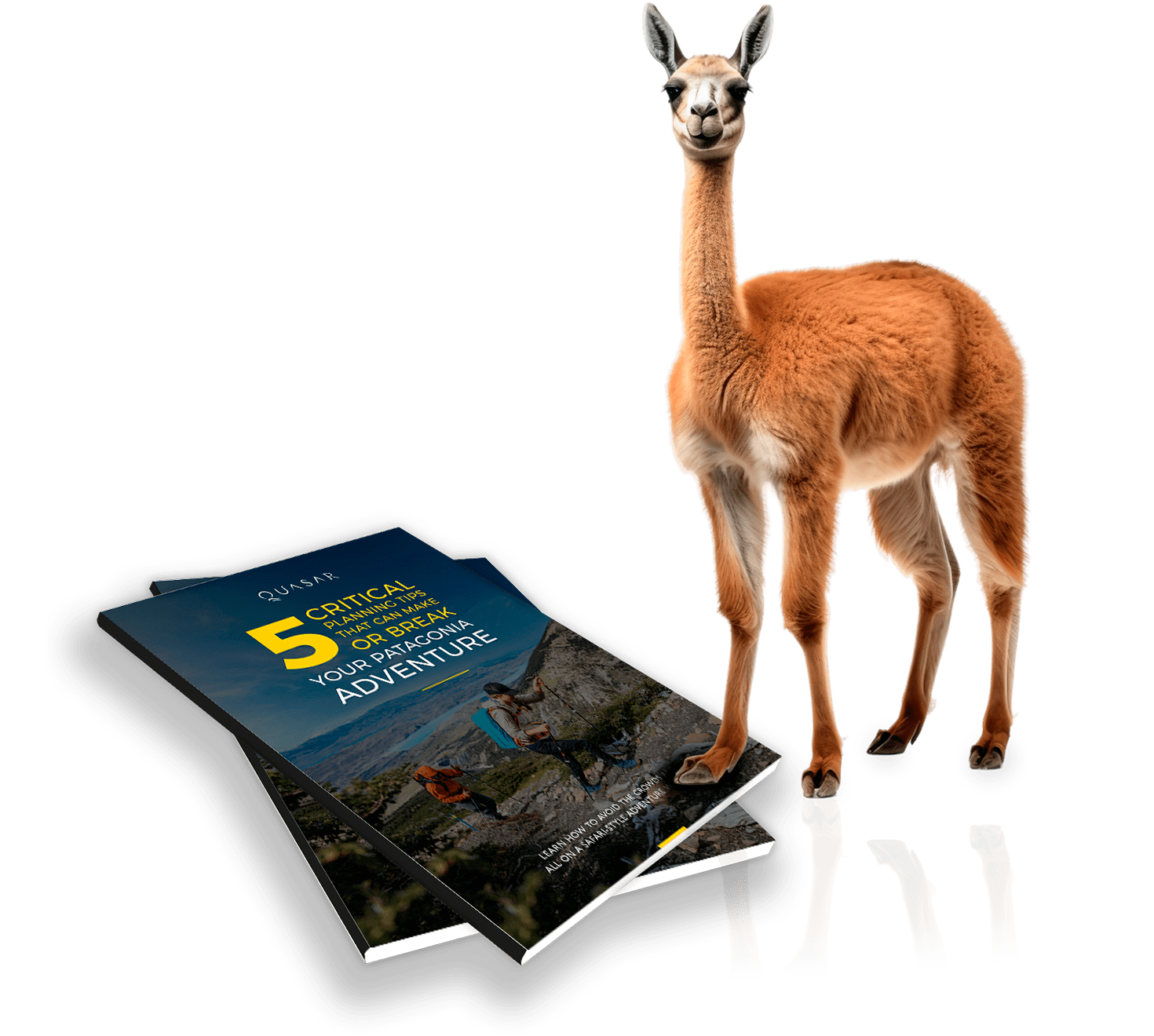
Patagonia is a distinct geographical region at the base of South America spanning the lower sections of Argentina and Chile. Patagonia is a sparsely populated region located at the southern end of South America, shared by Argentina and Chile. The region comprises the southern section of the Andes mountains as well as the deserts, steppes and grasslands east of this southern portion of the Andes. Patagonia has two coasts; a western one towards the Pacific Ocean and an eastern one towards the Atlantic Ocean.

On a Patagonia Safari with Quasar, venture into the vast beauty of the untamed southern part of Patagonia, where exclusive access allows you to explore some of the world's most picturesque landscapes, teeming with rare wildlife encounters and natural wonders.
WATCH VIDEO
Welcome to Patagonia, a breathtaking world of untamed wilderness and stunning natural wonders. Discover awe-inspiring glaciers, pristine fjords, and snow-capped mountains defining its charm. Embark on epic adventures to iconic destinations like Torres del Paine, El Chalten, and Perito Moreno Glacier. Marvel at Patagonia's rich culture, thriving wildlife, and untouched beauty. Whether hiking ancient forests or cruising turquoise lakes, prepare for an unforgettable journey of discovery and adventure. Explore the raw magnificence of Patagonia, a land of wonders awaiting your visit.
Both Chile and Argentina are democratic republics. At a state level, Patagonia lies inside two countries: Chile and Argentina. Both countries have organized their Patagonian territories into non-equivalent administrative subdivisions: Provinces and departments in Argentina; and regions, provinces and communes in Chile. Being a unitary state Chile's first level administrative divisions—the regions—enjoy far less autonomy than Argentine provinces. Argentine provinces have elected governors and parliaments, while Chilean regions have government-appointed intendants.
| Country/Region | Area | Population | Density |
| Argentina | 2,780,400 per km2 | 40,091,359 | 14.4 per km2 |
| Chile | 743,812 km2 | 16,601,707 | 22.3 per km2 |
| Patagonia | 1,043,076 km2 | 1,999,540 | 1.9 per km2 |
Many regions of Patagonia have very low population density. The total population of Patagonia is about 2 million, which is in Argentina and Chile combined, with the large majority living in Argentina.


